
The snow season has passed by for us in Ohio, finally. This year it seems to have stayed around longer than most with snow in the middle of April! Looking back, this has been a great winter for snow photos. I have also learned a lot about how to photograph with snow on the ground, which can be challenging.
I find that lighting is probably the most challenging with snow on the ground because of the reflections off of the snow. Midday is hard since it bounces light right back at you, especially when doing aerial photography. I have found this time does make for great black and white photos for snow. The contrast is very high. This makes for very strong blacks and bright whites. To get the best lighting so you don’t have light bouncing right back into your camera, sunrise and sunset lighting is best, as I love to have in almost any photo. As with any scene in this lighting, it is softer light. This is helpful with snow so you can get the shutter to not be so quick. Plus, the golden hour of these times reflects in a beautiful way off of snow as shown in the panoramic photo of the neighborhood with snow at sunrise.
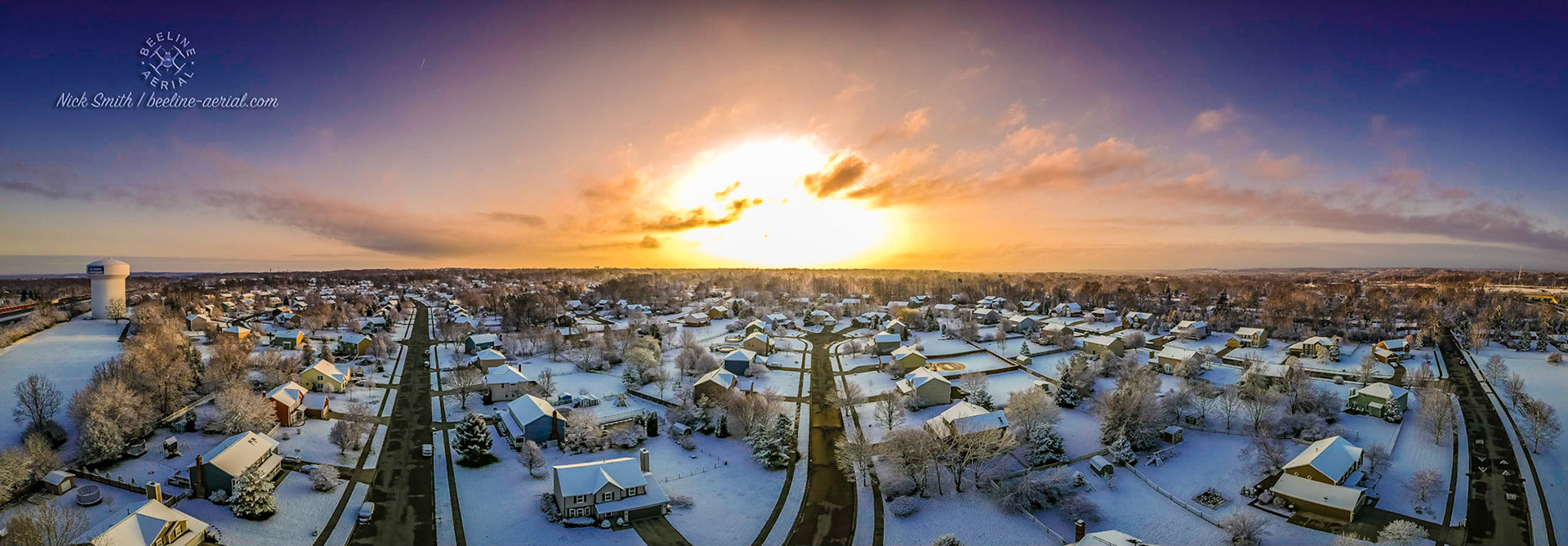
To help with the lighting on snow in midday, I compensate with finding locations where the lighting is diffused, like in the woods or under partly cloudy skies. I also use filters on my cameras and drone for this. I have both polarizing lens filters and variable neutral density (ND) filters for them. I have found that I really got the most for my money with variable ND filters since I could dial in the amount needed instead of having to get multiple filters, spending more money, and switching until I get the right amount of light to enter the sensor. I have been able to get photos that were in the range of a shutter of 1/4000 or more back in the range I like for shutter speed of around 1/1000 or slower while keeping my aperture in the sweet spot for my equipment (drones f/5-6.3, camera f/4.5-8). The great thing about this lesson learned is that it can be applied to a variety of situations throughout the year!
With filters, there is another item to remember, especially with equipment that uses a gimbal like the drones. These gimbals are balanced for the original lens. When you remove and add the polarizing lens or ND lens, you will notice the camera hangs down due to the gimbal being unbalanced. (See the photos below.) This can cause premature motor fatigue in the gimbal or overheating. To help with balancing, a counter balance can be added to the back of the gimbal. There are many ways to do this: lead tape, weights, etc. If you decide not to use counterweights, take some precautions to keep your equipment from having a malfunction . I personally only use the filters for one battery on my drones, then swap back out to the original lens. I also check for overheating after the flight to make sure the gimbal is not too hot. If it is, I give it about 10-15 minutes to cool down then start up again. I do this same procedure if I want to use the filters for more than one flight in a row. Please keep in mind, this is just my personal experience and procedures I do so as to try and avoid gimbal issues.
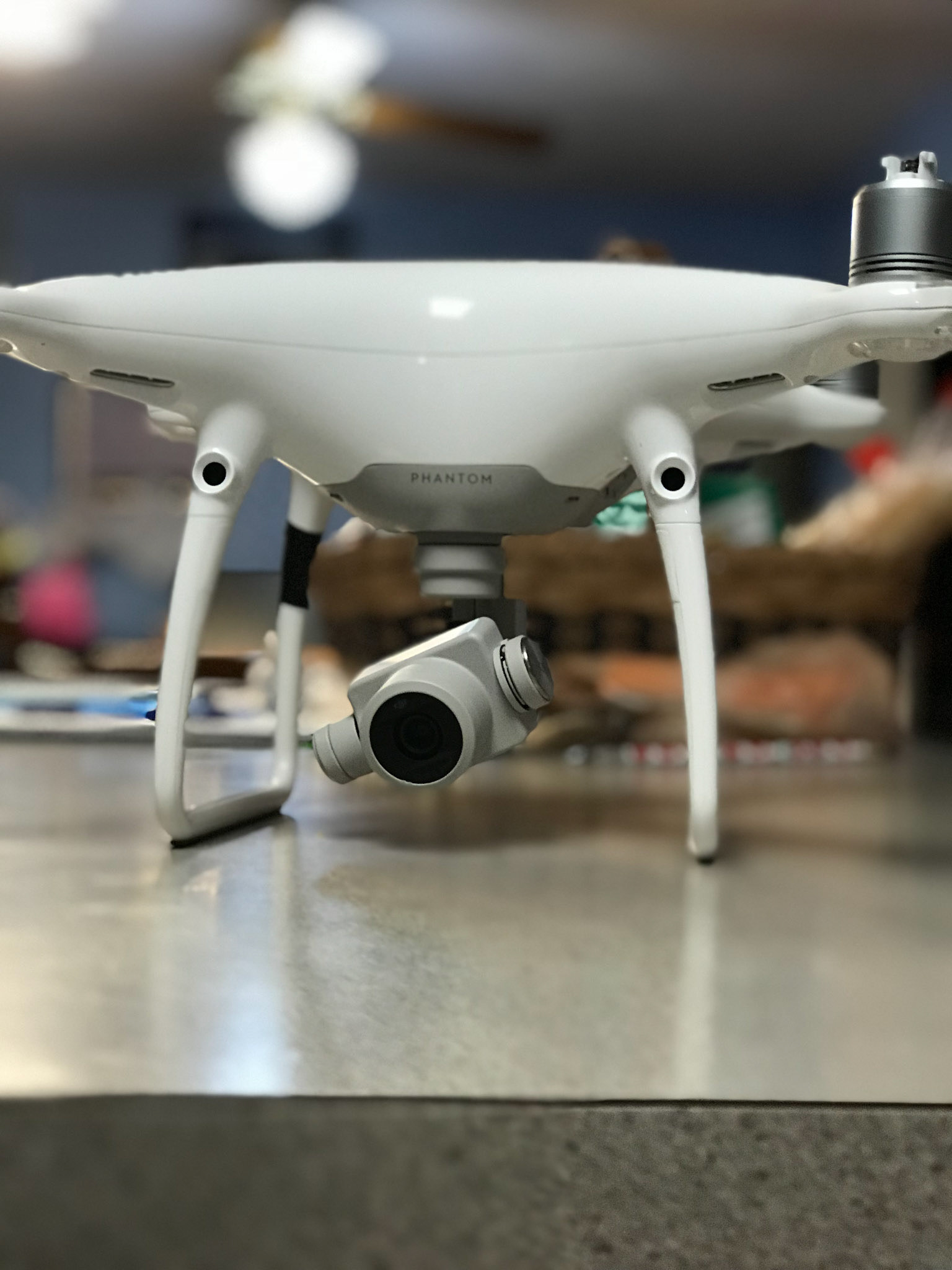
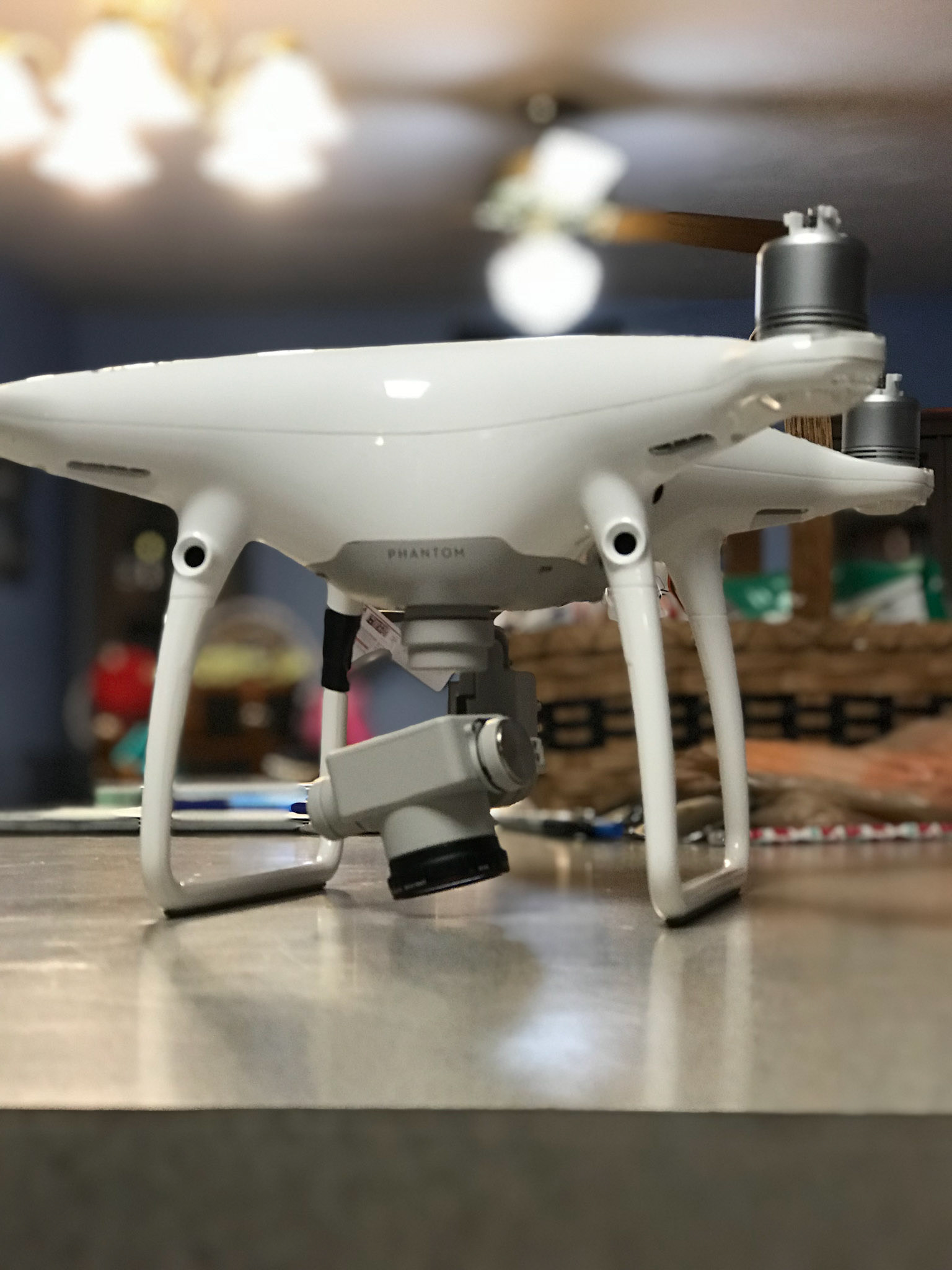
Besides lighting and using different techniques to get the feel you want with your photos, I have also learned much with taking care of your equipment in cold weather and snow. If you are in cold weather, you have to make sure your equipment is acclimated to the weather conditions before starting your shoot. 1st and foremost, make sure you have a dry spot to set up. This can be a table, your vehicle, pavement, or some other dry area. Personally, I like to use the back of my truck or my launch pad for my drone. I made it out of 1/2 thick plywood put together with piano hinges to make it more portable. I also make sure to have my tripod with me for my ground photos to keep the camera off the wet ground. For the LiPo batteries, I always carry them in a watertight case or a cooler so I can keep them from getting cold and keep moisture from getting on them to reduce the risk of malfunction from the batteries. When it is extremely cold, I put a hand warmer wrapped in a towel with the batteries to keep them warm. For the drones, the batteries need to be at least 15 degrees C before flying to reduce the risk of damage to the batteries. I do this by checking the monitor from the app. I then take off and hover about 10 feet until the battery reaches the 15 degree C mark. This helps with not only the battery but the drone as well since it allows the motors to warm up before flying around full speed. Getting the equipment acclimated to the environment is also crucial to avoid condensation on the camera lens. This can be a real nuisance when you are ready to go and all you see is fog through your camera.
I also like to look for contrasts in snow. My favorite subjects are red structures with now around them. There is just something about red being contrasted with white surroundings that makes me excited about my photography for that day. This can be seen with two of my favorite subjects, red barns and covered bridges.
The final thing to remember is to make sure you are properly prepared with clothing, hand warmers, etc., so you do not have any issues. Trust me, your hands get cold quick holding a camera or remote out in the cold with just a little wind. If you are going to make a day of it. Take plenty of breaks to stay warm.
So, what can we learn from the snow and our equipment? Take your time, as with any shoot. Stay warm. Give yourself enough time to set up. Get the equipment acclimated to the environment. Check your lighting and determine if you need to compensate with filters or other ways to get the look you want. Find something that will contrast the snow well to be the subject. Keep those batteries warm and dry! You will find these concepts can be applied almost any time of year with snow giving you a little extra challenge. Most of all have a great time. That is why we do this. We enjoy capturing those moments through our photography. Make the most of it and you will find some amazing views that are only there but a handful of times a year.
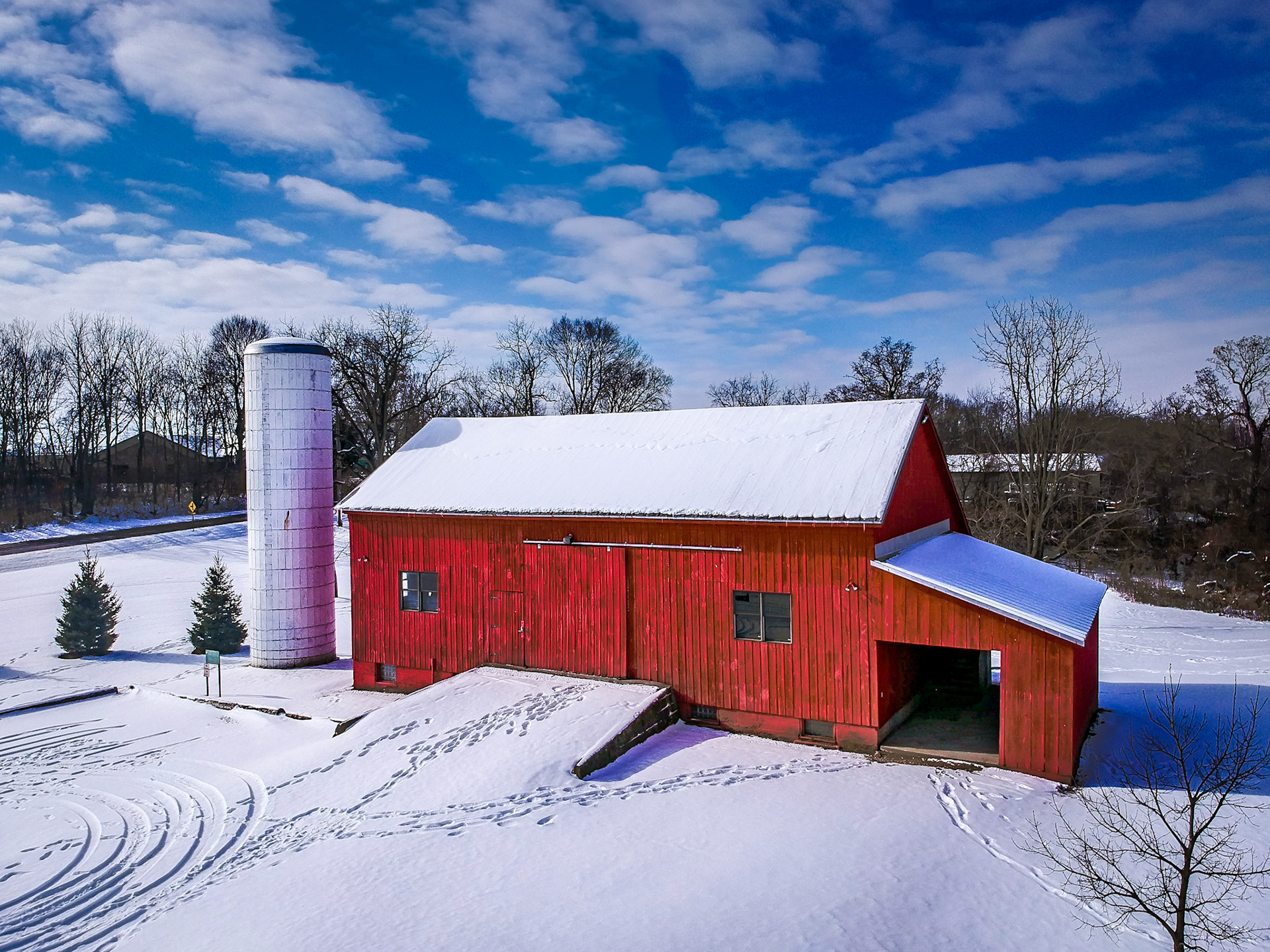
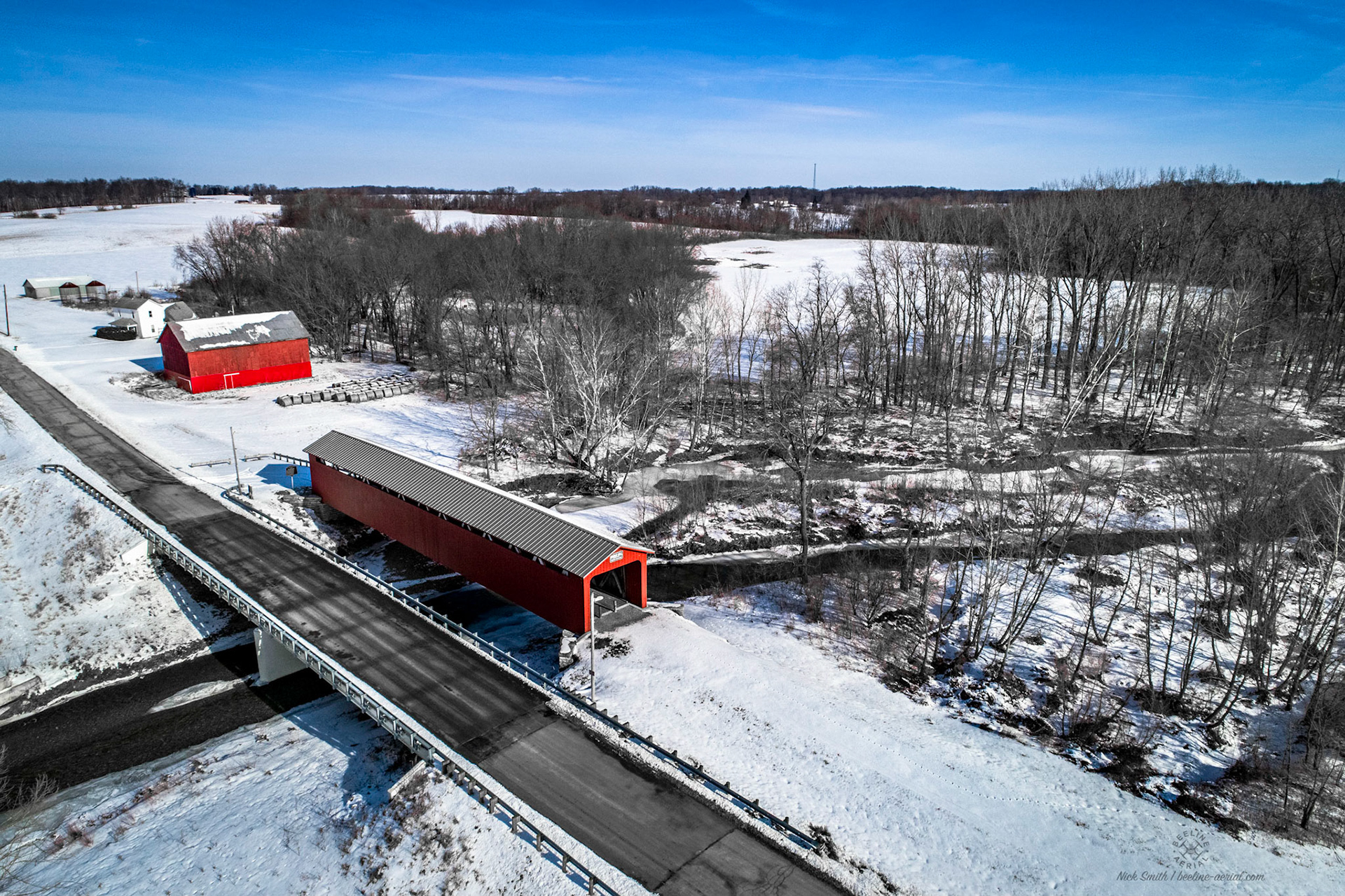
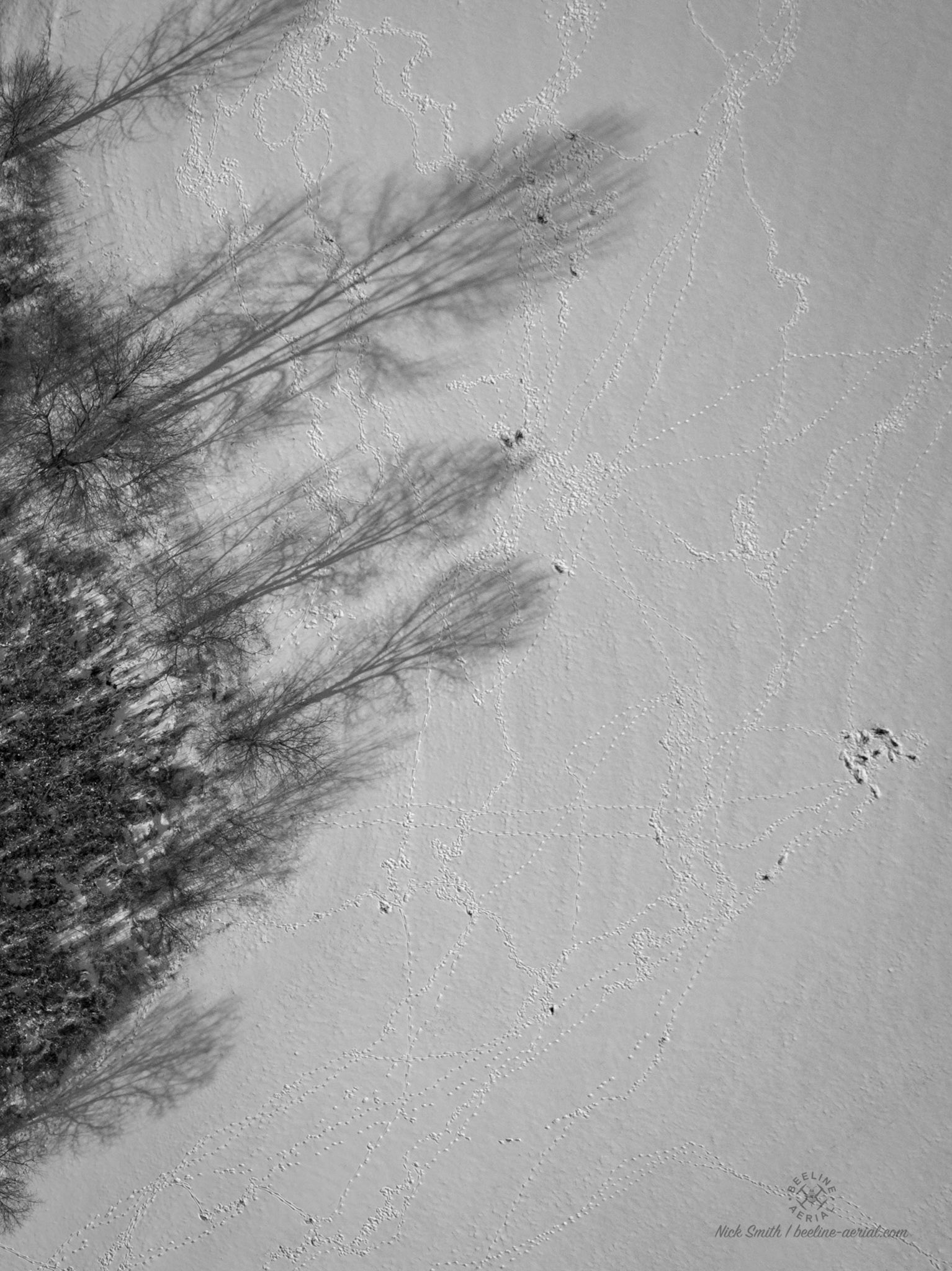
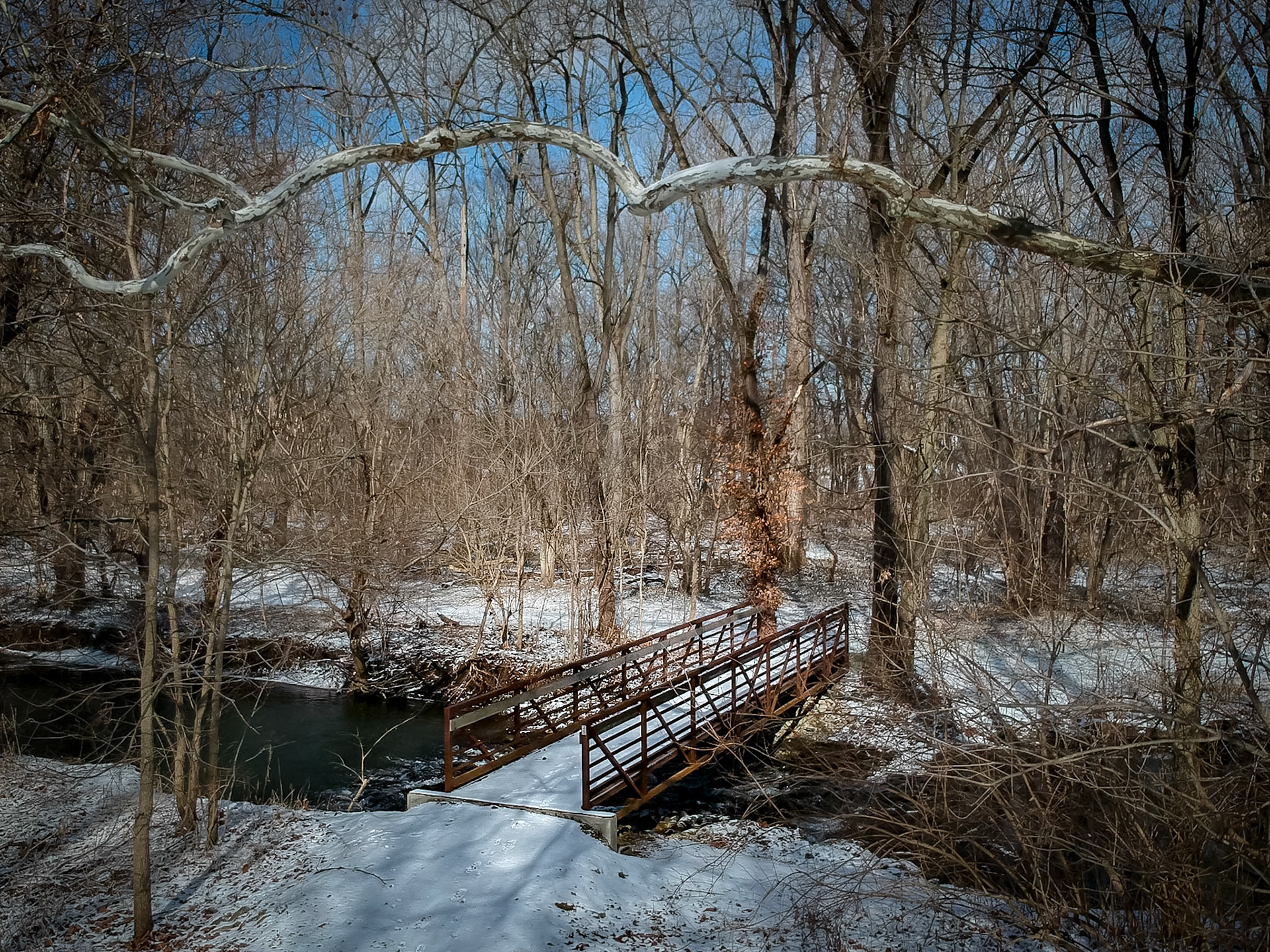

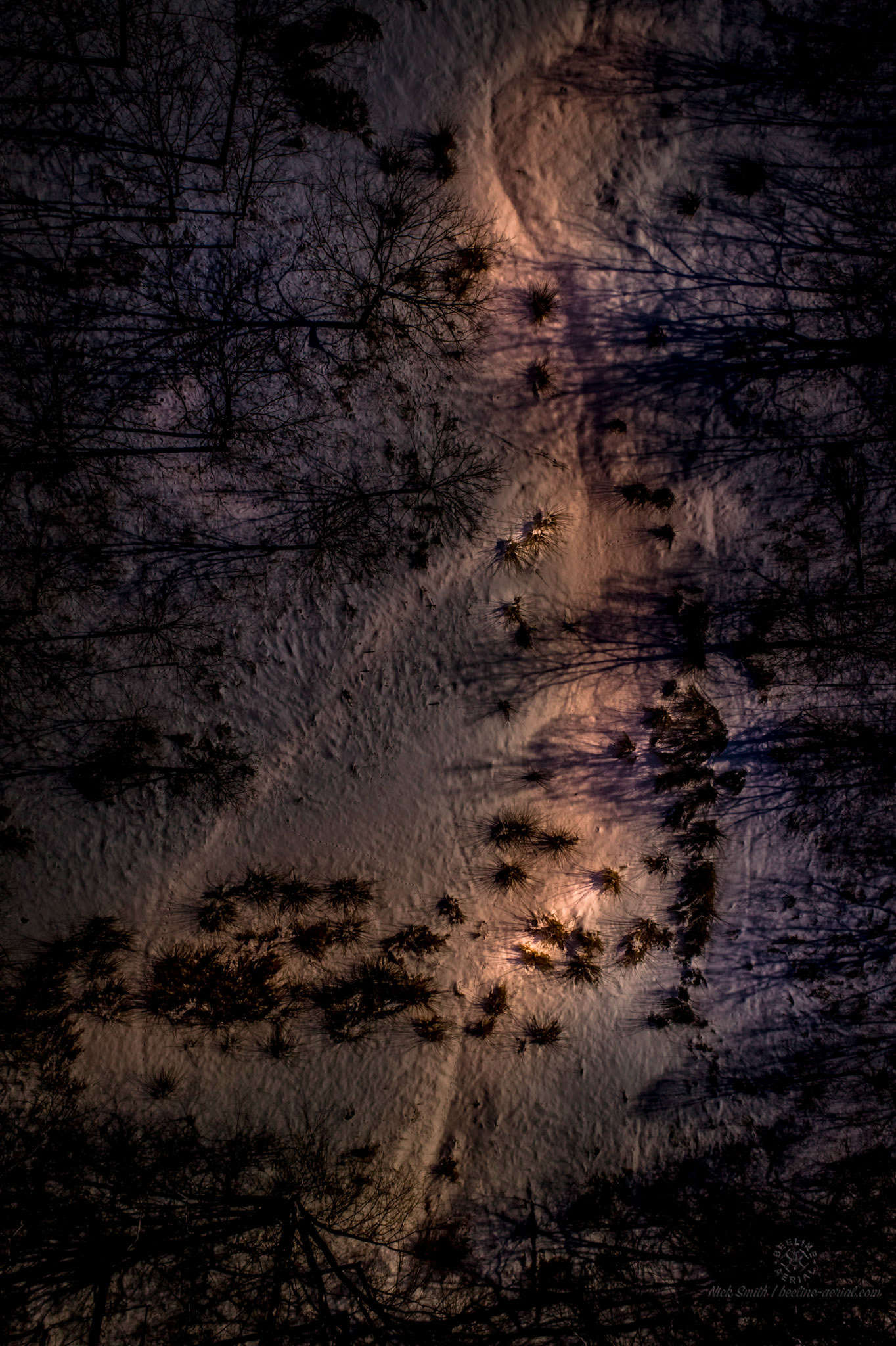

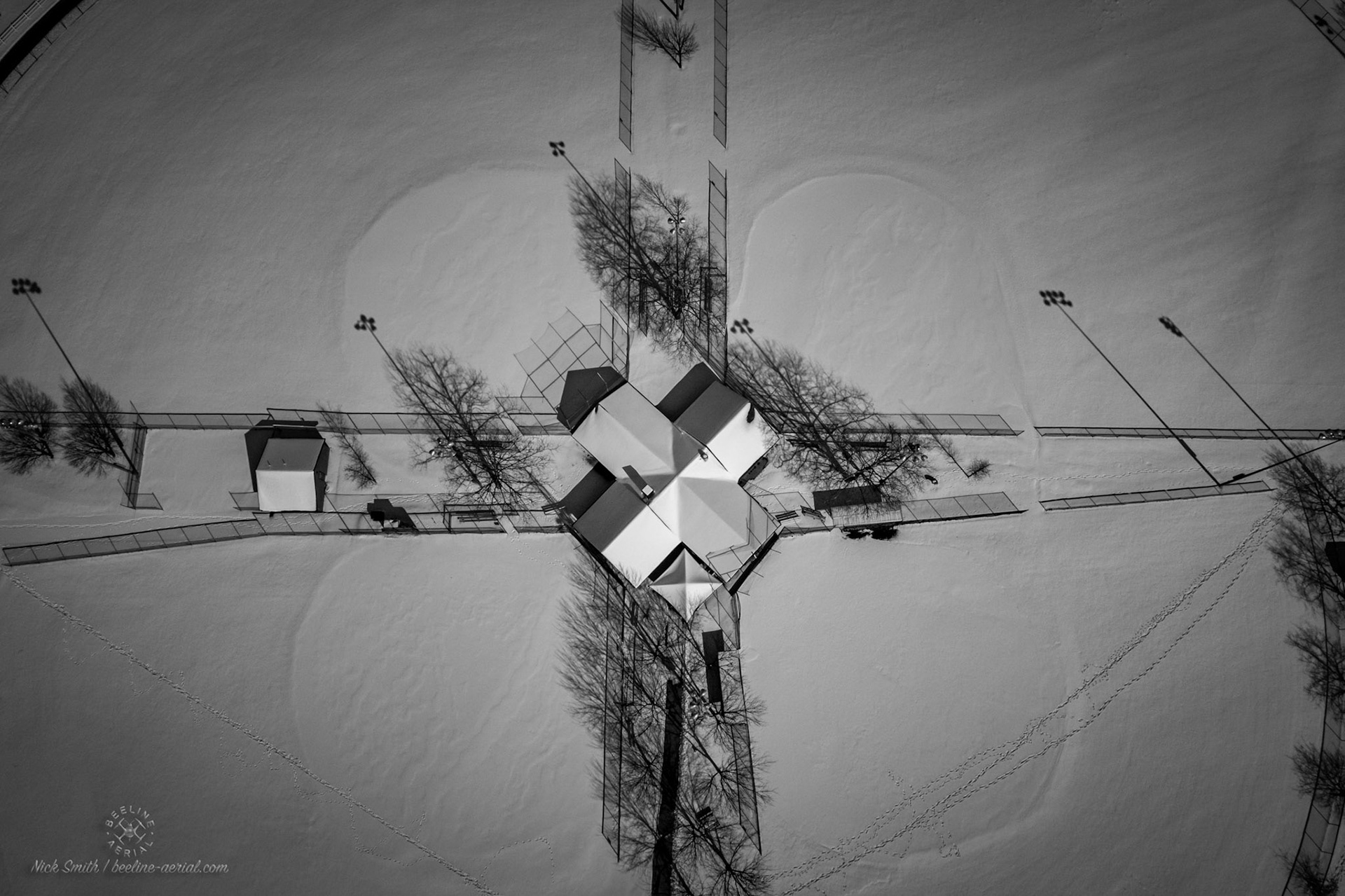

COMMENTS
SHARE A COMMENT
Thank you for submitting your comments for the blog today!
